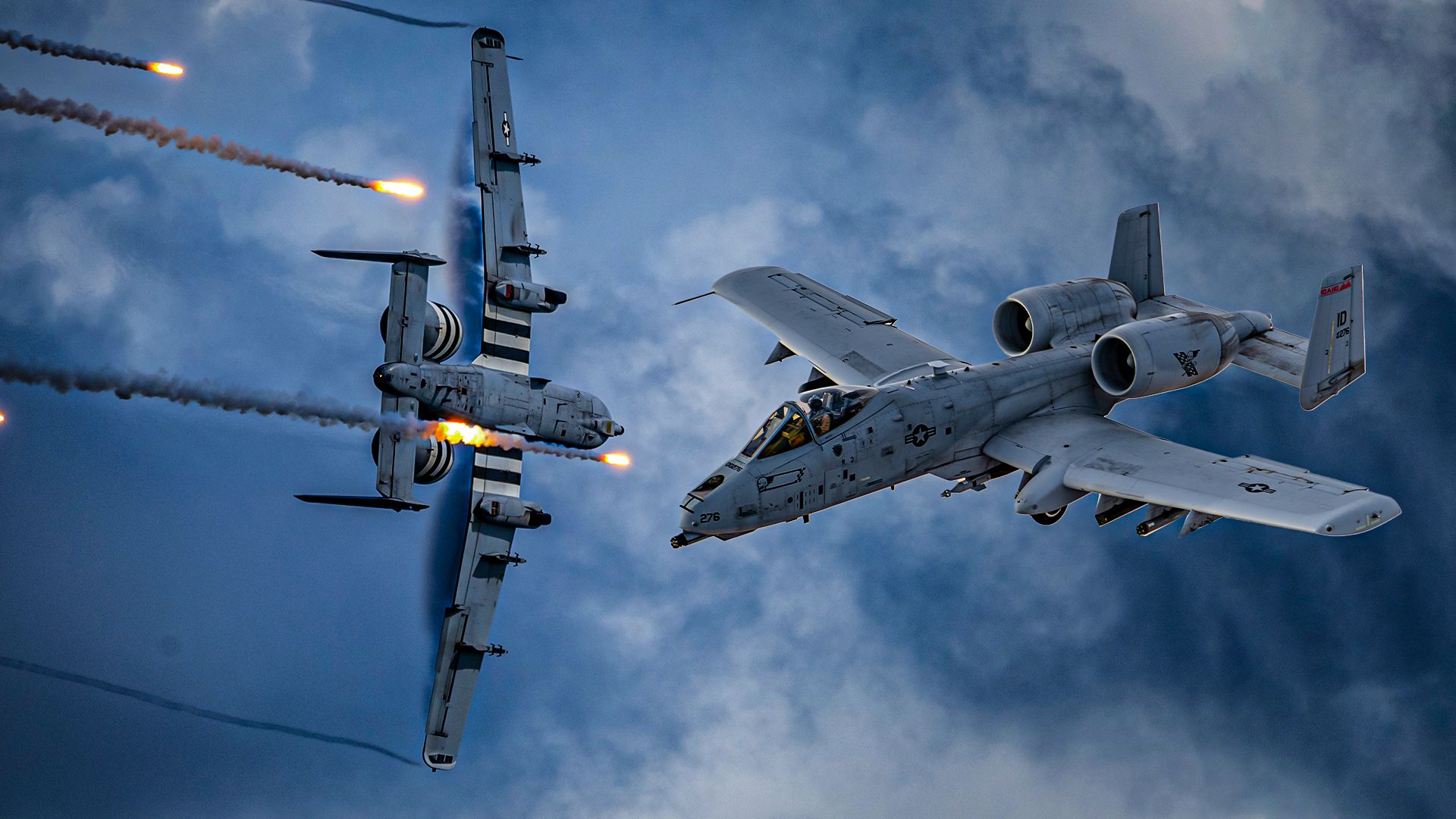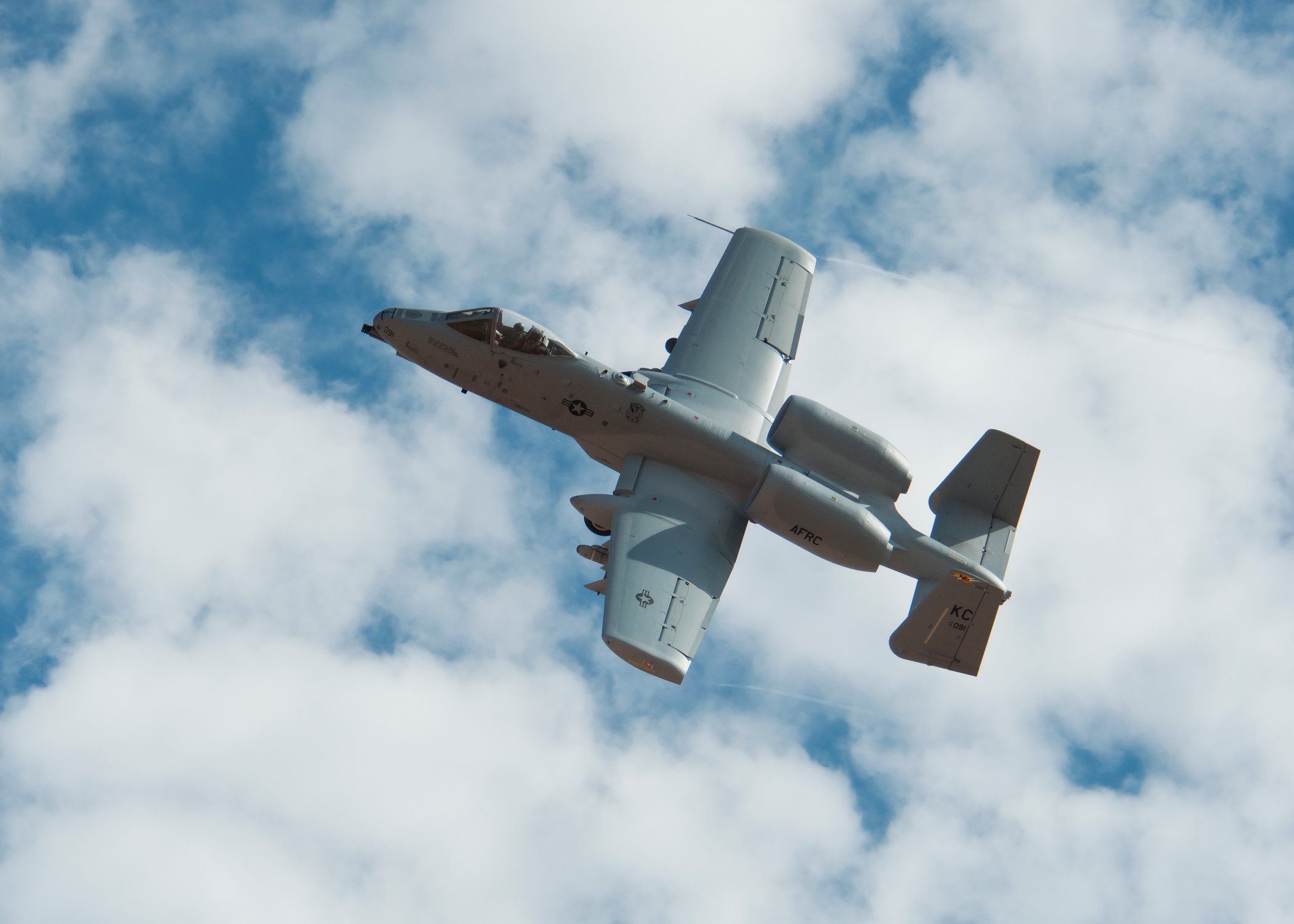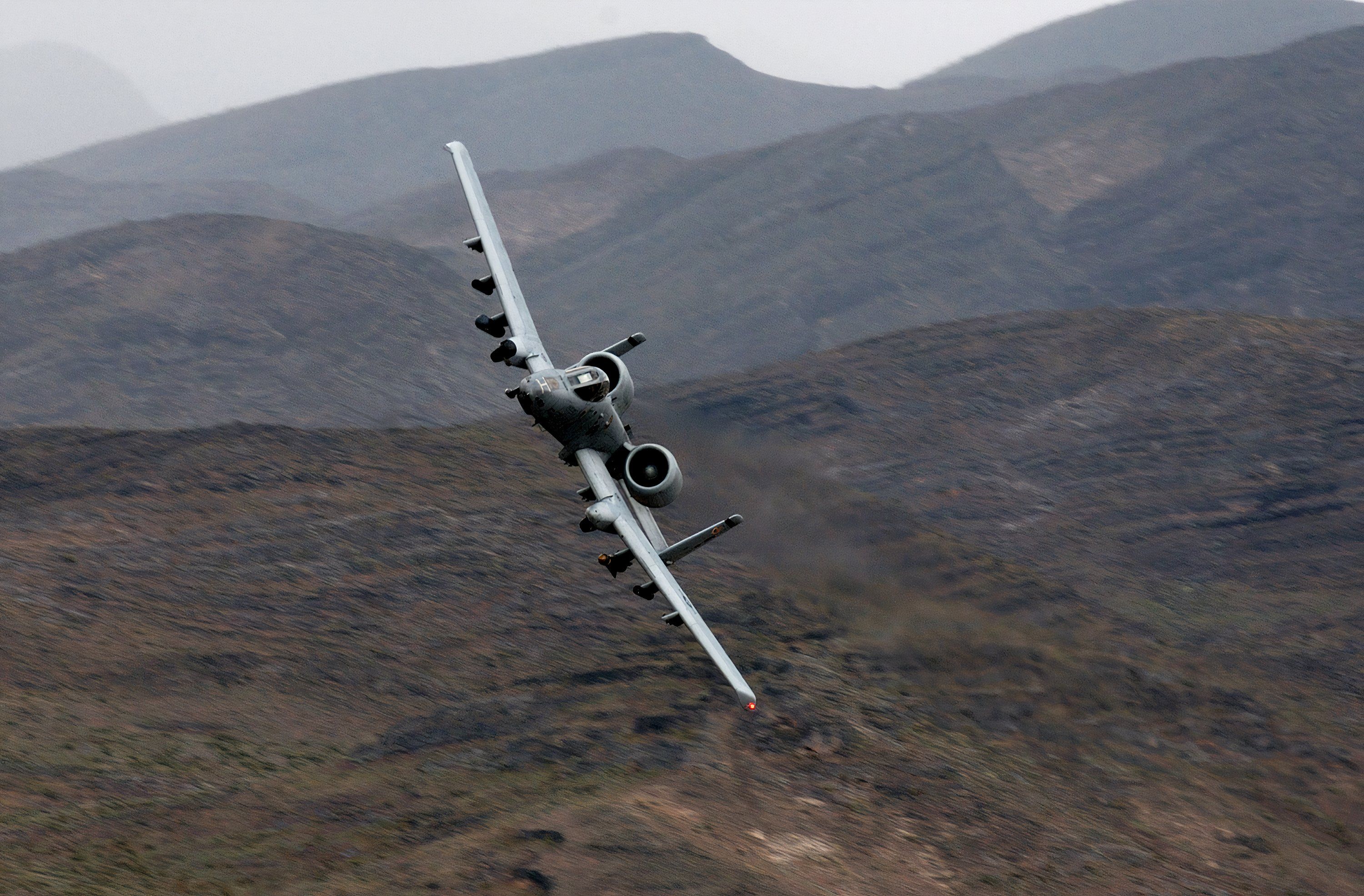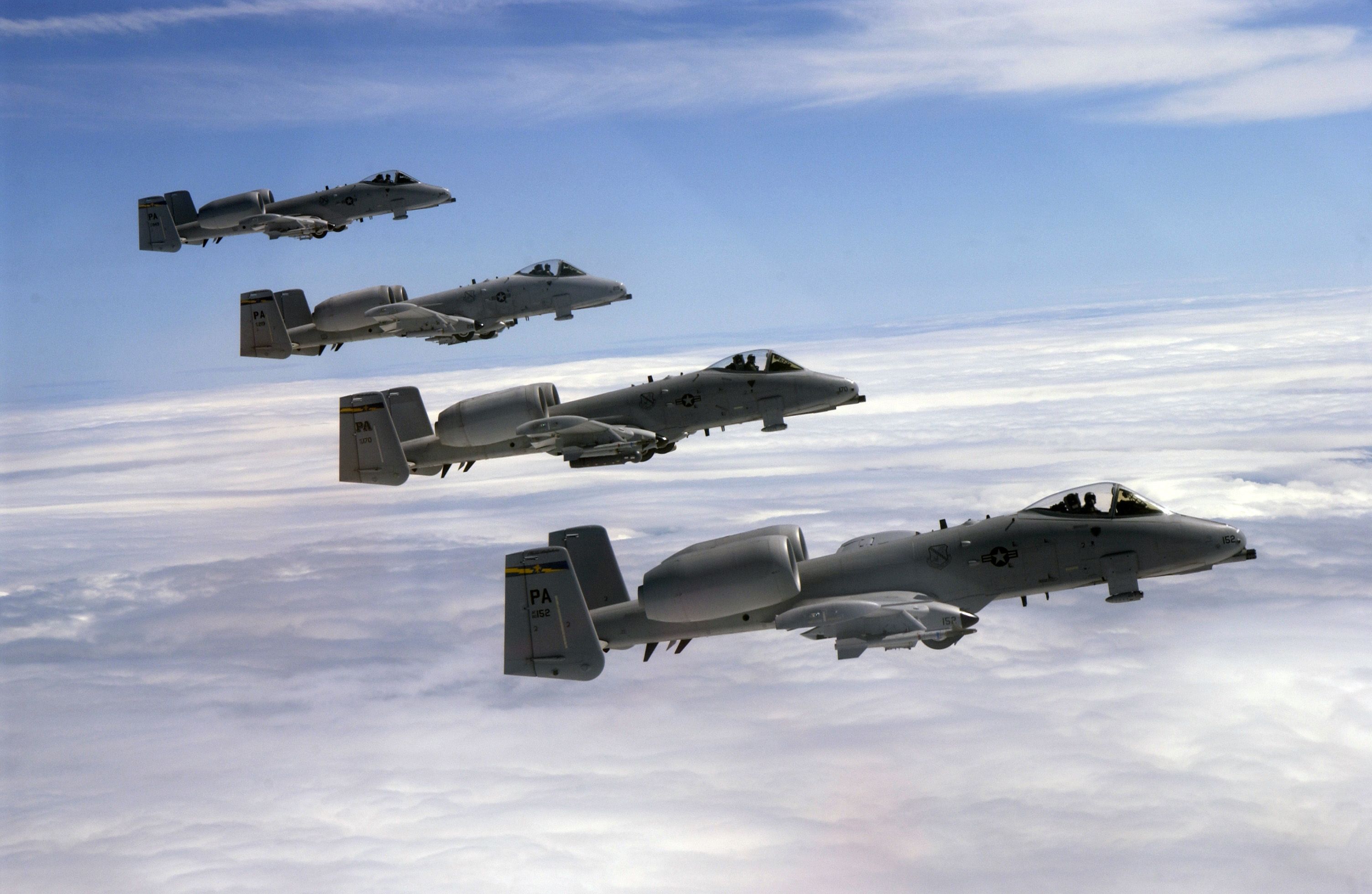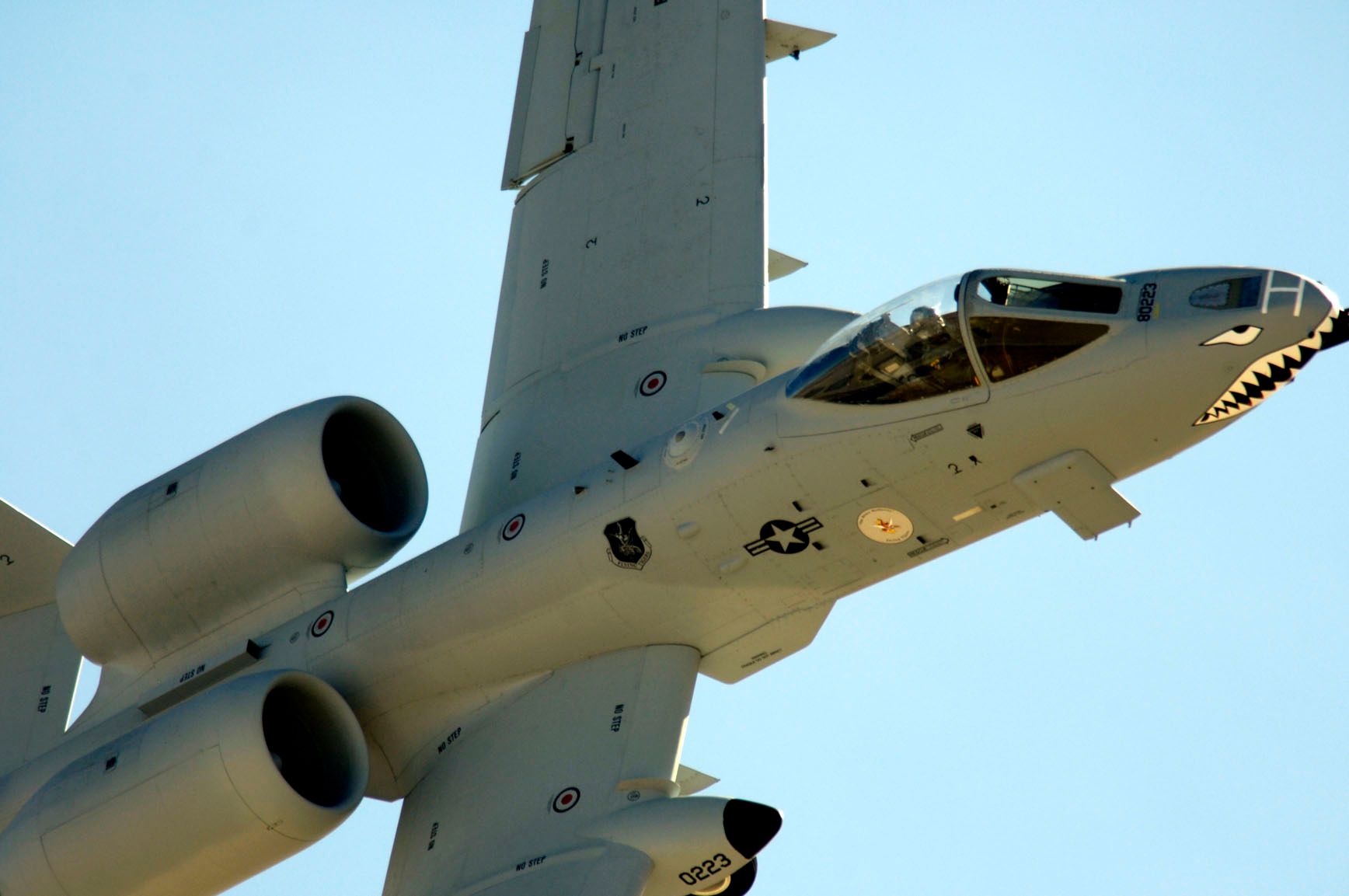Summary
- A-10 Warthog’s maneuverability is top-notch, making it a formidable force in close air support missions despite its bulky appearance.
- Pilots praise the A-10’s wing design for allowing slow-speed flight and tight turns, crucial for navigating challenging CAS terrain.
- The Warthog’s combat record in Operation Desert Storm showcases its ability to deliver a devastating barrage of firepower, earning its feared reputation.
Military aircraft enthusiasts are no strangers to the A-10 Thunderbolt II, introduced by Fairchild Republic in 1977 and affectionately known as “The Warthog” ever since. Unencumbered by the standards of aeronautical beauty, the Warthog is held in high esteem for its imposing cannon and deadly arsenal, boasting legions of fans worldwide. However, hidden in the shadows of its striking weaponry, the Warthog’s underrated maneuverability is often overlooked.
Maneuverability by design
Capable of aerobatic maneuvers, including barrel rolls, split-s, Immelmann turns, Cuban eights, and wingovers, to name a few, the A-10 Warthog offers impressive maneuverability that belies its unwieldy appearance. However, the A-10 Warthog was not designed for air show demonstrations. To fully understand the scope and significance of the Warthog’s surprising maneuverability, one must first understand the unique mission for which it was designed – close air support (CAS).
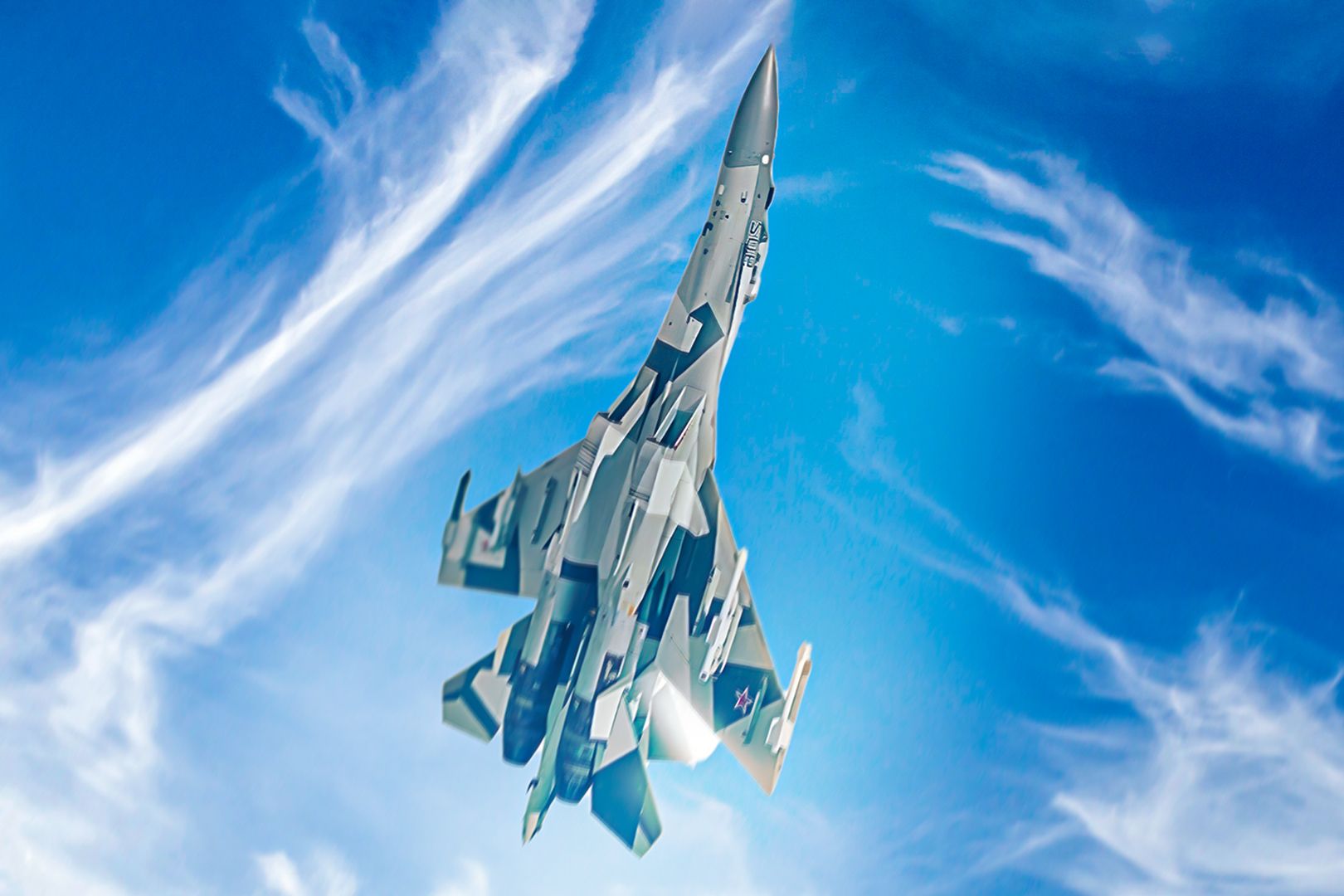
Related
Airshow Aerobatics: Incredible Fighter Jet Maneuvers Named & Explained
Maneuvers that somehow defy the laws of physics and gravity excite crowds at airshows around the world.
Defined by the U.S. Air Force Doctrine Publication 3-03 as “air action by aircraft against hostile targets that are in close proximity to friendly forces and that require detailed integration of each air mission with the fire and movement of those forces,” CAS presents specific challenges to aircraft tasked with this vital mission. CAS missions demand maneuverability that doesn’t rely on speed. CAS calls for an aircraft that can fly low and slow, and get in and out.
Thanks to a structural design that features low wings with a sizable surface area and high aspect ratio, along with large decelerons that function as both ailerons and air brakes, the A-10 boasts tremendous slow-speed, low-altitude maneuverability, and loitering capabilities few fighter aircraft can match. In addition, the Warthog has an incredibly tight turn radius and is capable of short take-offs and landings, all critical characteristics given the challenging and often uncertain terrain of CAS missions.
Photo: Capt. Susan Harrington I U.S. Air Force
Ask a Warthog pilot
When interviewed on “The Fighter Pilot Podcast,” retired U.S. Air Force Lieutenant Colonel Luke “Supa” Fricke, a former A-10 pilot, lauded the A-10’s wing design. The design provides greater lift, allowing for flight at slower speeds and greater maneuverability, particularly in limited airspace. Lt. Col. Fricke reflected on A-10 CAS missions flown during Operation Enduring Freedom in Afghanistan.
“We, because we’re maneuverable, can get down into these mountain valleys…this upside down triangle, and the clouds are on top…and I would always tell my wingman we’re going to fly on the left side of the valley or on the right side of the valley…because when you get to the end and you have to turn around if you’re all the way on one side… you’re gonna make it. We turn real tight in this airplane.” Lt. Col. Luke “Supa” Fricke, A-10 pilot
Photo: Tech. Sgt. Kevin J. Gruenwald I U.S. Air Force
While CAS is the A-10’s primary mission, the Warthog’s slow-speed agility makes it a surprisingly formidable foe during air-to-air combat. In an interview with TheWarZone.com, Retired USAF A-10 pilot and former A-10 Basic Fighter Maneuvers (BFM) instructor at the USAF Weapons School at Nellis AFB in Nevada, Colonel Denny “Gator” Yount looked back fondly on his days as BFM instructor.
“The air-to-air guys have a radar, and they are a lot faster than we are, but they quickly learn that it doesn’t pay for them to get into the proverbial phone booth with us for a close-in dogfight. Most pilots of other [aircraft] didn’t really understand our strengths until they had fought us a few times. The best turn radius will get the first shot opportunity. If you put an A-10 in that close-turning fight, we do very, very, well.” Colonel Denny “Gator” Yount, A-10 pilot
Flying ‘Hogs versus sitting ducks
The A-10’s maneuverability played a significant role in Operation Desert Storm. This Gulf War mission saw the “tank killer” credited with destroying a total of 967 tanks, 1026 pieces of artillery, 1306 trucks, 281 military structures, 53 Scud missiles, and 12 aircraft, two of them via air-to-air combat. Flying low and slow, the A-10 could lock onto its battlefield target and fire a lethal combination of munitions from its abundant armament and weapons systems, including the GAU-8/A Avenger 30mm cannon, Mk82/Mk-84 drag bombs, cluster bombs, AGM-65 Maverick and guided missiles.
Photo: Kenn Mann I U.S. Air Force
Exploiting its tight turn radius, the Warthog could quickly get in and out, only to circle back for additional attacks. A circling 4-ship formation of A-10s amounted to a near-constant, devastating barrage of destructive force, striking demoralizing fear into those in its sights.
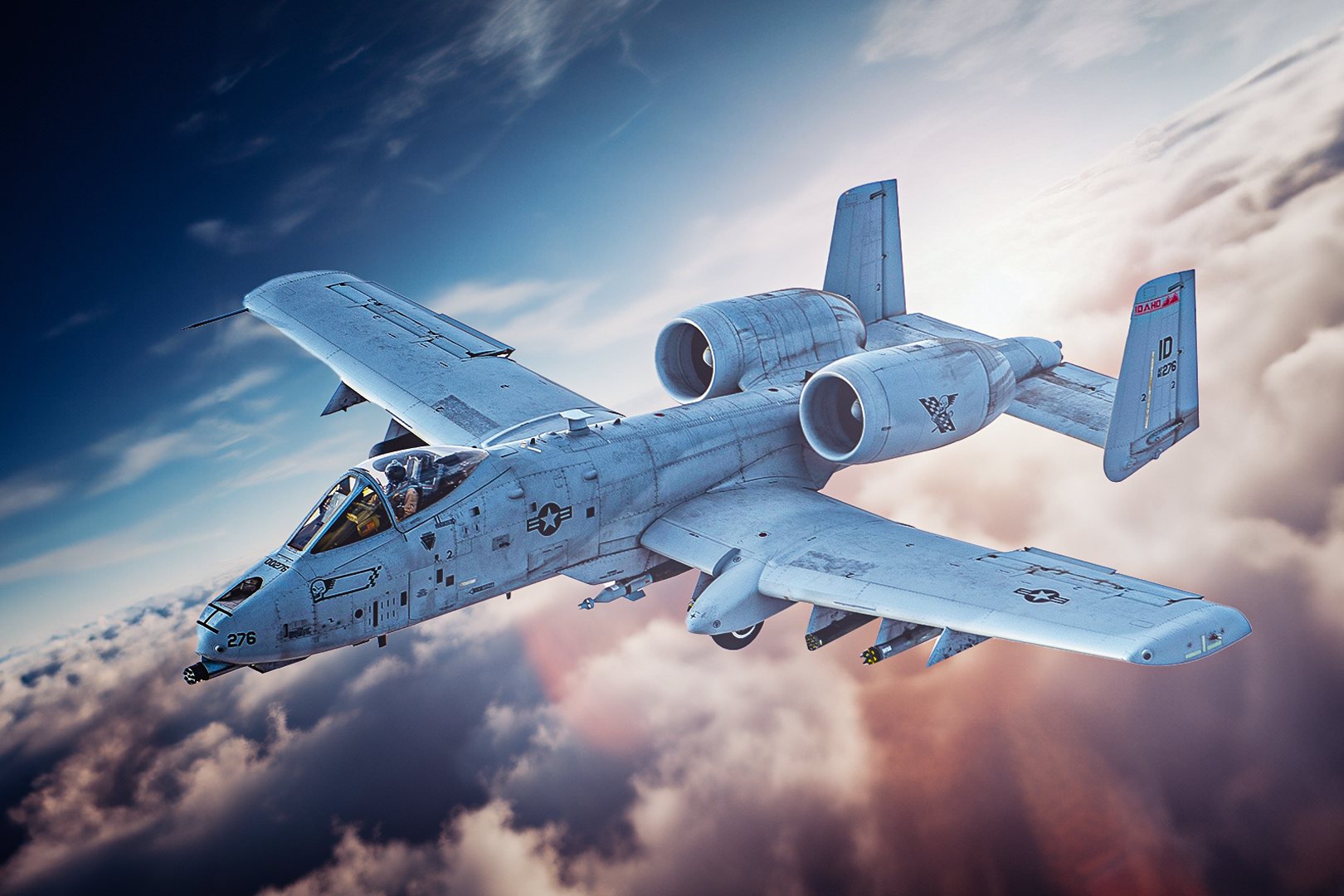
Related
Why Is The A-10 Warthog So Feared?
A lethal combination of unmatched firepower, durability, versatility, and combat record
Given its CAS mission, even the most experienced A-10 pilot will inevitably incur battle damage. Fortunately, the Warthog was designed with this consideration in mind. That’s why, in addition to cradling the pilot in a titanium “bathtub,” spacing the engines apart and protecting its fuel cells with internal and external foam, redundant flight control systems allow the A-10 pilot to perform necessary maneuvers via manual flight controls should its hydraulic system fail.
Beauty is in the eye of the beholder
While the Warthog may not fly as fast or flaunt a silhouette as sleek as fighter jets like the F-14 Tomcat, F-15 Eagle, F-16 Fighting Falcon, F-22 Raptor, or F-35 Lightning, the Warthog wasn’t designed to be pretty. No, the Warthog eschews mirrored sunglasses and popped-up collars for safety goggles and cut-off sleeves; beauty for brawn. Though long-in-the-tooth it may be, the A-10 Warthog possesses a particular set of skills, not the least of which is outstanding maneuverability, that make it one of the most iconic fighter aircraft of all time. As for beauty, there’s nothing more beautiful in the eyes of friendly ground troops under enemy fire than the sight of an A-10 Warthog approaching on the horizon.
Photo: U.S. Air Force
To witness the Warthog’s maneuverability in action, check out the Davis-Monthan A-10 Thunderbolt II Demonstration Team, performing in its final season, at an air show near you.
A-10 Thunderbolt II Specifications
- Powerplant: 2 x General Electric TF34-GE-1 00 turbofans
- Thrust: 9,065 lbs each engine
- Wingspan: 57 ft, 6 in (17.42 m)
- Length: 53 ft, 4 in (16.16 m)
- Height: 14 ft, 8 in (4.42 m)
- Weight: 29,000 lbs (13,154 kg)
- Maximum Takeoff Weight: 51,000 lbs (22,950 kg)
- Fuel Capacity: 11,000 lbs (7,257 kg)
- Payload: 16,000 lbs (7,257 kg)
- Speed: 420 mph (Mach 0.56)
- Range: 800 mi (695 NM)
- Ceiling: 45,000 ft (13,636 m)
- Crew: One
- Inventory: Active force, A-10, 143 and OA-10, 70; Reserve, A-10, 46 and OA-10, 6; ANG, A-10, 84 and OA-10, 18
What are your thoughts about the aircraft? Let us know what you think in the comment section.

